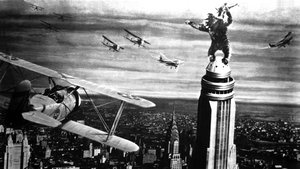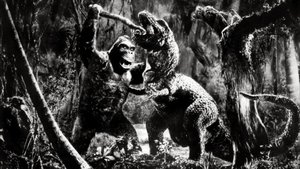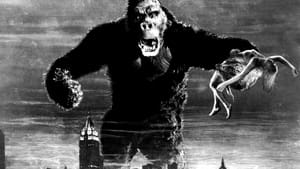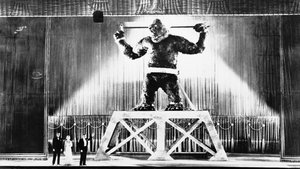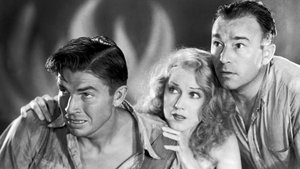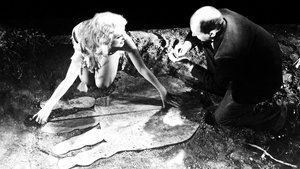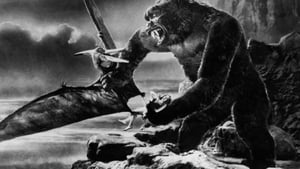Contact: info@alwanfilm.com
Video Sources 0 Views
- Watch trailer
- King Kong

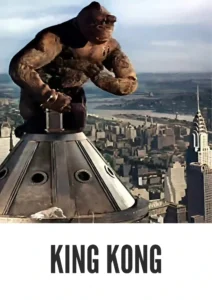
Synopsis
Table of Contents
ToggleReview: King Kong 1933 Colorized – A Spectacular Adventure Through the Jungles of Imagination

Introduction
“King Kong” (1933) stands as a monumental achievement in the realm of cinematic storytelling, captivating audiences with its groundbreaking special effects and timeless tale of adventure and romance. In this review, we’ll delve into the significance of this classic film and explore its enduring legacy in the annals of cinema.
Check The Full Colorized Movies List
Check Our Colorized Movies Trailer Channel
Understanding King Kong 1933 Colorized: Director, Cast, and Genre
Directed by the visionary Merian C. Cooper and Ernest B. Schoedsack, “King Kong” (1933) showcases their pioneering spirit and unparalleled creativity in bringing a fantastical world to life on the silver screen. The film features a stellar cast, including Fay Wray, Robert Armstrong, and Bruce Cabot, whose performances breathe life into the iconic characters that populate the jungles of Skull Island. Blending elements of adventure, horror, and romance, “King Kong” (1933) transports viewers to a world where the impossible becomes possible and the unimaginable becomes reality.
Exploring the World of King Kong 1933 Colorized: Plot and Characters
At its core, “King Kong” (1933) follows the harrowing journey of a film crew who venture to the mysterious Skull Island in search of the legendary giant ape known as Kong. As they navigate the treacherous jungles and encounter a host of prehistoric creatures, they find themselves drawn into a battle for survival against forces beyond their wildest imagination. Along the way, they form an unlikely bond with Kong himself, whose tragic fate serves as a poignant reminder of the power of love and the consequences of greed and exploitation.
The Art of Film Colorization
While “King Kong” (1933) was originally filmed in black and white, the decision to release it in a colorized format has sparked debate among fans and purists alike. While some argue that colorization detracts from the film’s visual aesthetic and artistic integrity, others maintain that it offers a fresh perspective on the classic tale and introduces it to a new generation of viewers. Ultimately, the choice to colorize “King Kong” (1933) allows audiences to experience the film in a new light and appreciate its timeless appeal in vibrant hues.
Early Colored Films: A Brief History
The history of colored films traces its roots back to the early days of cinema, with filmmakers experimenting with various techniques to add color to their creations. From hand-painted frames to early Technicolor processes, the evolution of colored film has been marked by innovation and ingenuity, paving the way for the development of modern colorization techniques that continue to captivate audiences to this day.
King Kong 1933 and Its Early Colored Version
The decision to release “King Kong” (1933) in a colorized format offers viewers a fresh perspective on the timeless tale of adventure and romance. By adding color to the film’s iconic imagery, the early colored version of “King Kong” (1933) breathes new life into the classic story and immerses audiences in the vibrant world of Skull Island. While purists may prefer the original black and white version, the early colored release allows fans to experience the film in a new light and appreciate its enduring legacy in vivid detail.
The Debate Over Film Colorization
The debate over film colorization is a complex and multifaceted issue, with passionate arguments on both sides of the divide. Proponents argue that colorization revitalizes classic movies for modern audiences, breathing new life into timeless stories and introducing them to a new generation of viewers. Conversely, detractors maintain that colorization detracts from the authenticity of the original work, altering the director’s artistic intent and diminishing the historical significance of the film.
Examining King Kong 1933 as an Early Colored Film
As with any colorized classic, the impact of colorization on “King Kong” (1933) is a matter of personal interpretation. Some may argue that it enhances the film’s visual appeal and immerses viewers in its world, while others may feel that it detracts from the stark beauty of the original black and white version. Regardless of one’s stance on the issue, there’s no denying the enduring power of “King Kong” (1933) as a timeless masterpiece that continues to captivate audiences with its thrilling action, groundbreaking special effects, and unforgettable characters.
Influence and Legacy: King Kong 1933 Colorized’s Impact on Cinema
“King Kong” (1933) has left an indelible mark on the world of cinema, inspiring countless filmmakers and captivating audiences with its groundbreaking special effects and timeless tale of adventure and romance. From its iconic imagery to its enduring themes of love and sacrifice, the film continues to resonate with viewers of all ages, reaffirming its status as a beloved classic of the fantasy adventure genre.
Director’s Cinematic Legacy: Beyond King Kong 1933 Colorized
Merian C. Cooper and Ernest B. Schoedsack’s influence extends far beyond “King Kong” (1933), with a diverse body of work that continues to captivate audiences around the globe. From “The Most Dangerous Game” to “Mighty Joe Young,” Cooper and Schoedsack’s films are celebrated for their innovation, imagination, and timeless appeal. Through their groundbreaking work, they have left an indelible imprint on the world of cinema, inspiring generations of filmmakers to follow in their footsteps.
Themes Explored in King Kong 1933
“King Kong” (1933) explores a myriad of themes, from the timeless allure of adventure to the destructive nature of greed and exploitation. Through its richly drawn characters and thrilling storytelling, the film invites viewers to ponder the complexities of the human condition and the consequences of our actions. As audiences immerse themselves in the world of “King Kong” (1933), they are reminded of the power of cinema to transport us to other worlds and explore the depths of our imagination.
Reception and Controversy Surrounding King Kong 1933 Colorized
Upon its release, “King Kong” (1933) received widespread critical acclaim, with many praising its groundbreaking special effects, thrilling action sequences, and unforgettable characters. However, the decision to release the film in a colorized format sparked debate among fans and purists, reigniting the age-old discussion surrounding film preservation and artistic integrity. Despite the controversy, “King Kong” (1933) remains a beloved classic that continues to captivate audiences with its timeless tale of adventure and romance.
Where to Watch King Kong 1933 Colorized Online
For those eager to experience the timeless magic of “King Kong” (1933), the film is readily available on popular streaming platforms such as Netflix, Amazon Prime, and Hulu. Whether you choose to watch it in its original black and white format or the early colored version, “King Kong” (1933) promises to transport you to a world of adventure and excitement, where the impossible becomes possible and the unimaginable becomes reality.
FAQs About King Kong 1933 Colorized
Q: Is “King Kong” (1933) based on a true story? A: No, “King Kong” (1933) is a fictional tale crafted by Merian C. Cooper and Edgar Wallace, who drew inspiration from various sources, including Cooper’s own experiences and the allure of unexplored territories.
Q: Who are the main actors in “King Kong” (1933)? A: “King Kong” (1933) features an ensemble cast led by Fay Wray, Robert Armstrong, and Bruce Cabot, whose performances bring the iconic characters of Ann Darrow, Carl Denham, and Jack Driscoll to life with depth and nuance.
Q: What awards did “King Kong” (1933) win? A: While “King Kong” (1933) did not win any major awards, its impact on the world of cinema cannot be overstated. The film garnered critical acclaim for its groundbreaking special effects, innovative storytelling, and enduring legacy in the realm of fantasy adventure.
Q: Why was “King Kong” (1933) released in a colorized format? A: The decision to release “King Kong” (1933) in color was made to introduce the film to a new generation of viewers and enhance its visual appeal for modern audiences. While the choice to colorize the film sparked debate among purists, it ultimately allowed “King Kong” (1933) to reach a wider audience and ensure its continued relevance in the annals of cinematic history.
Conclusion
As we reflect on the enduring legacy of “King Kong” (1933), let us celebrate its status as a timeless classic that continues to captivate audiences with its groundbreaking special effects, thrilling action sequences, and unforgettable characters. Whether viewed in its original black and white format or the early colored version, “King Kong” (1933) remains a shining example of the power of cinema to transport us to other worlds and ignite our imagination with its timeless tale of adventure and romance.
